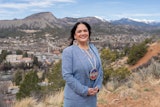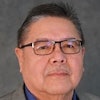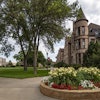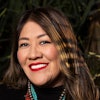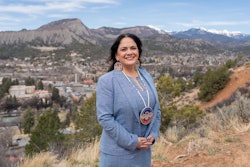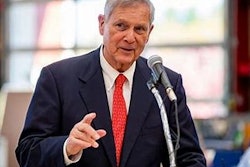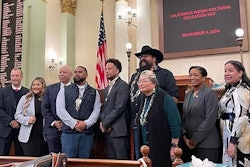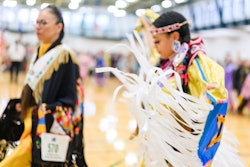BARTLESVILLE Okla.
Carol Conner asks participants in Oklahoma’s annual Indian All-State basketball games the same question every year: How many of them are planning on attending college?
In 1996, the first year of the event, “one person raised their hand,” she recalled, a number that encouraged the woman with an upbeat, can-do personality. “One person.”
Fast forward to 2007, when every one of the four dozen players on the roster for this year’s games, held in June, said they had some sort of plans for college.
While state and national statistics don’t yet reflect it, Conner and her husband, Joe, believe they are seeing a major shift in attitudes about college among American Indians namely, that most now believe a postsecondary education is essential to advance in almost any career.
“There is just such a big difference in having a degree or not having one,” said Taloa Williford of Tishomingo, who carried a 3.9 grade point average in high school.
Such statements please the Conners, who are both psychologists and work extensively with American Indians. But they also realize their quest to emphasize the importance of higher education among that group is only beginning.
According to NCAA statistics, during the 2004-2005 school year the most recent for which numbers are available 0.4 percent of male basketball players at member colleges were American Indian. The number of female players was 0.5 percent.
The dearth of role models for aspiring young American Indians means that when players emerge like Jenny Plumley of Oklahoma a Frontier High School product who has blood ties to the Comanche, Otoe, Pawnee and Pueblo tribes and broke into the Sooners’ starting lineup last season as a freshman they immediately become icons in the American Indian community.
“With the whole Native American background, people have their stereotypes,” Plumley said. “People don’t know if we’re going to be able to handle it or if there will be too much pressure on us. It’s pretty tough. Now people want me to do this and that for Native Americans, and it’s so hard with NCAA regulations.”
Still, she tries to accommodate as much as she can, because she understands the importance of setting an example for other American Indian youngsters.
At a recent OU camp, “a little Indian girl asked to take a picture with me,” Plumley recalled. “Her mom said they came all the way from Montana to attend the camp to see me … Every time I talk to people, I have to realize what I’m doing.”
Part of the reason there are so few role models for Indian basketball players is that so few of their parents attended college, said Joe Conner, who is a member of the Osage tribe.
“The kids who do well in school, no matter what race they are, their parents tend to have done well in school also,” he said.
“What you find out when you look at things that impact dropout rates, American Indians as a rule don’t have the same college graduation rates in the general population. Many of these kids came from homes where parents didn’t have good luck in school themselves and they’re not able to nurture these kids to higher education.”
That makes positive peer pressure more important, he said, which is something the Conners try to foster through educational sessions for the players during their brief time at the Indian All-State event.
First, all the players are paired with someone they don’t know and must learn that person’s name, hometown and where they plan to be in one year. During the process, Carol Conner quickly moves from table to table and quizzes those in attendance sometimes humorously about what has been learned about their fellow players. By the end of the process, she hopes, everyone will know something about everyone else.
Those relationships could pay off in future years, she said, if a player decides he or she doesn’t like where they are attending college. Rather than drop out, she tells them, call a friend and consider transferring.
Later, a recruiter and a financial aid representative from Oklahoma Wesleyan University in Bartlesville, which hosts the event, speaks to the players, walking them through the process of applying to college and reminding them that in some cases, their tribes will help pay for their college education.
While basketball can be a useful tool toward paying for that education, the most important thing is that the players stay in college, said GinaMarie Scarpa-Mabry of Phoenix, one of the founders of the Native American Basketball Invitational, an event started in 2003 that has grown to include more than 1,000 players.
“If they go on to play college ball, that’s wonderful, but the most important thing we’re accomplishing is the educational opportunity,” she said. “We’ve had kids who came who had no plans (for college) who have now graduated.”
The Conners share that philosophy, even if their event is on a somewhat smaller scale, and it seems the players are listening.
“School is the most important thing for all of us,” said Eric Paul of Chelsea, who will attend Rogers State University in Claremore on a basketball scholarship. “Basketball is just a way to do that.”
For some who have played in the Indian All-State event, it has changed their lives. Davia Seay of Big Cabin had planned to attend another college, but while visiting Oklahoma Wesleyan for the event, she received a scholarship offer from the college’s coaches and now is entering her senior season at the NAIA Division II school. Four other girls who played with her at Indian All-State also signed with Oklahoma Wesleyan.
“There are some extremely good (American Indian) athletes with good attitudes and good upbringing, but they need that push” toward college, Seay said, adding that the positive peer pressure she experienced at Indian All-State “was a good pressure to go through.”
“I remember a girl who wasn’t going to go to college. But after coming here, she did end up going to school … When you are young, sometimes you need that extra role model, and she found that here.”
– Associated Press
© Copyright 2005 by DiverseEducation.com
